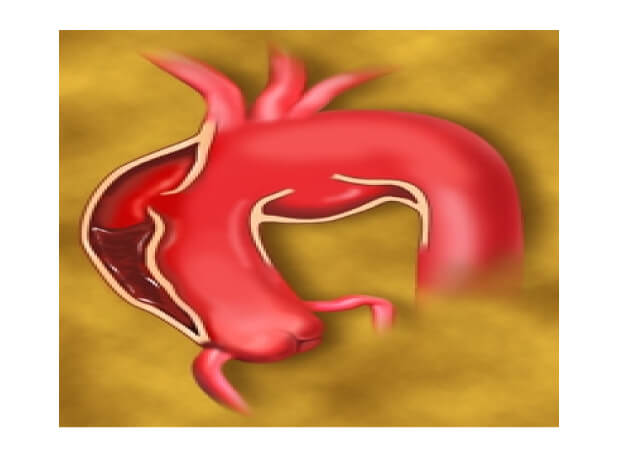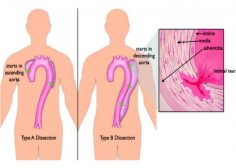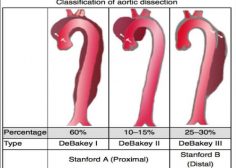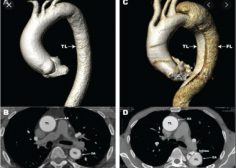Aortic dissection
- Home
- Pathology CEC Adult
- Current Page

Aortic dissection is a serious condition in which there is a tear in the wall of the major artery carrying blood out of the heart (aorta). As the tear extends along the wall of the aorta, blood can flow in between the layers of the blood vessel wall (dissection). This can lead to aortic rupture or decreased blood flow (ischemia) to organs.
Causes
When it leaves the heart, the aorta first moves up through the chest towards the head (the ascending aorta). It then bends or arches, and finally moves down through the chest and abdomen (the descending aorta).
Aortic dissection most often happens because of a tear or damage to the inner wall of the aorta. This very often occurs in the chest (thoracic) part of the artery, but it may also occur in the abdominal aorta.
When a tear occurs, it creates 2 channels:
- One in which blood continues to travel
- Another where blood stays still
If the channel with non-traveling blood gets bigger, it can push on other branches of the aorta. This can narrow the other branches and reduce blood flow through them.
An aortic dissection may also cause abnormal widening or ballooning of the aorta (aneurysm).
What are the causes of aortic dissection?
Risk factors for aortic dissection include:
- High blood pressure
- The presence of an aneurysm
- Atherosclerosis (or buildup of plaque in the arteries)
- Certain genetic conditions like a bicuspid aortic valve
- Connective tissue diseases (such as Marfan syndrome) which run in families
- Traumatic injury after a car crash or from a high fall
- Family history of aortic dissection





